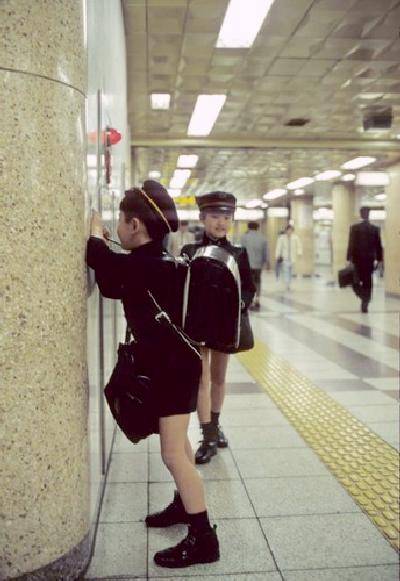
Figure 1.--These prtimary school children boys attending a private school use Tokyo's efficent subway. Most primary-level public school children, especually in ciyies, live close enough to their schools to walk to school. |

|
The pattern of getting to school is a little different in Japan because of the importance of public transit. We see fewer schools busses in Japan than America ans several European countries. Japan is a very densly populated country. Not only is it a relatively small country, but it is rugged and mountaneous. The popularion is thus concentrated in the coastal plains where agriculture was possible and thus here cities developed. The population is heavily urbanized. This is less true of the northern island of Hokkaido, but the rest of the country where most people live is heavily urbanized and densly populated. And as Japan began to industrialize (late-19th century), the population expanded and cities grew leading to an even more dense population pattern. Thus most Japanese children live close enough to their schools to walk to school. This is especially the case of children attending state primary schools. Children attending private schools and state and private secondary schools, however, commonly require transport to get to school. This primarily means busses, trains, and subways. The larger cities like Tokyo have excelent subway systems. Some primary children also take public transportation such as busses and subways. Japan is a very safe country with low crime rates so it quite safe for even younger children to take public transportation. This is even more common at the secondary level because the larger catchment area of secondary schools means that some of the students, unlike primary children, are able to walk to school.
The pattern of getting to school is a little different in Japan because of the importance of public transit. We see fewer schools busses in Japan than America ans several European countries. Japan is a very densly populated country. Not only is it a relatively small country, but it is rugged and mountaneous. The popularion is thus concentrated in the coastal plains where agriculture was possible and thus here cities developed. The population is heavily urbanized. This is less true of the northern island of Hokkaido, but the rest of the country where most people live is heavily urbanized and densly populated. And as Japan began to industrialize (late-19th century), the population expanded and cities grew leading to an even more dense population pattern.
Thus most Japanese children live close enough to their schools to walk to school. This is especially the case of children attending state primary schools. Children attending private schools and state and private secondary schools, however, commonly require transport to get to school. Japan is a very safe country with low crime rates so it quite safe for even younger children to take public transportation. This is even more common at the secondary level because the larger catchment area of secondary schools means that some of the students, unlike primary children, are able to walk to school.
Japanese school children thus use busses, trains, and subways to get to school. The type of transport varies depebding on where the chikldren live. Japan has an extremely efficient public transportation network, both within metropolitan areas and between the large cities. Japanese public transportation is characterized by punctuality, superb service, and the large numbers of people using it daily. The larger cities like Tokyo have excelent subway systems. Fukuoka, Kobe, Kyoto, Nagoya, Osaka, Sapporo, Sendai, Tokyo and Yokohama have subway systems. Other ccities have surface crail systems which play a major role in public transport. Some primary children also take public transportation such as busses and subways. In Tokyo and other large cities, because of the crowded streets, the subway is the only way to go any distance quickly. In Tokyo, Osaka and other large cities, buses serve as a secondary means of public transportation, complementing the train and subway networks. Road construction which the busses rely on is is difficult because of the high population density and the limited amount of usable land. The traffic is also very heavy, especially in the morning when the children sre going to school. They are usually used for short distances. In smaller cities with less dense train networks or no subways, they are more important. In Kyoto, for example, buses are the main means of public transportation.
Related Chronolgy Pages in the Boys' Historical Web Site
Late 19th century]
[The 1930s]
[The 1940s]
[The 1930s]
[The 1940s]
[The 1950s]
[The 1960s]
[The 1970s]
[The 1980s]
Related Style Pages in the Boys' Historical Web Site
[Long pants suits]
[Short pants suits]
[Socks]
[Eton suits]
[Jacket and trousers]
[Blazer]
[School sandals]
Navigate the Boys' Historical Clothing Web Page
[Return to Main school page]
[Introduction]
[Activities]
[Biographies]
[Chronology]
[Clothing styles]
[Countries]
[Bibliographies]
[Contributions]
[FAQs]
[Japanese glossary]
[Images]
[Links]
[Registration]
[Tools]
[Boys' Clothing Home]
